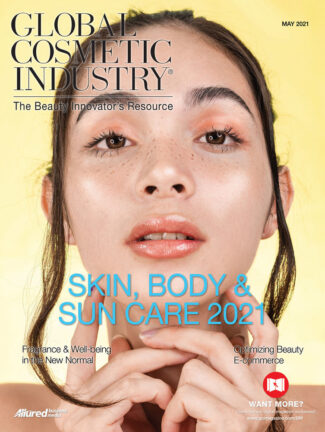
Optimizing E-Commerce for the New Normal

In a day and age when virtually every brand’s 2020 business imperative is to sell more products online, simply offering a standard e-commerce experience is not enough. With everyone in the race, your brand is vying to be the one that can captivate the customer. Why should a new customer purchase your product over your competitor’s? Why should consumers buy directly from your e-commerce site instead of a third-party reseller? The answer ultimately hinges on how your e-commerce platform builds a relationship and community with clients. Often a few crucial features will transform lackluster e-commerce site into one that thrives.
While all areas of a brand need to be evaluated for how well they are fit for digital objectives, the e-commerce site is the most important. Success in the digital space relies on being able to translate the physical product experience to a consumer. Brands should anticipate that a customer will not have touched or experienced the formulation before buying. The e-commerce site, in essence, must be the place where a client can come away with all the information they need to fully make the jump from an inquisitive search to enthusiastically making an informed purchase. The beauty of digital marketing tools today is your e-commerce experience can replicate the one-on-one conversation with clients that was once only able to be achieved in person. How you choose to frame and present that conversation determines if your site is going to be the destination for return customers. Building trust in a brand and providing education, entertainment, and social proof through your e-commerce site are the critical tools that will propel conversions of sales online.
TRUST
Establishing a sense of trust is an important part of any relationship, and the relationship between consumer and brand is no different. A customer is motivated to commit to buying your product if they are told that this product and brand are right for them. The keys to driving that point home are both visual and audio. In the e-commerce sphere, you inherently have more opportunities to control the narrative regarding everything you want a consumer to know about your product. With the in-store experience, you are limited to your packaging, and you are at the mercy of how your product is shelved or touted by staff on the floor. With your e-commerce platform, the sky is the limit to how complete a story you can tell.
Establishing trust in this context begins with total transparency. Total disclosure of your product and brand is not only a consumer desire but an expectation. One of the best ways to make your product appear trustworthy is by showcasing third-party seals, certifications, and clinical results on your site. Doing so will show that results of using this product are verifiable and backed by research, tests, and others. However, simple claims will not cut it. To fully win customers over on the idea that your product is right, they want to see the item produces results on people like them. The Benchmarking Company proves this point as they found that “72% of women and 54% of men surveyed expect disclosure of the attributions of the study participants (oily skin, acne).(1)” Whether the participants share in grooming habits, ethnicity, skin concerns, etc. – the data behind claims need to be representative of your client so they can connect with it. All this matters, and the more information you can provide to meet these expectations, the more a consumer can see that this is a product and brand that can meet their needs.
EDUCATION
Building trust also requires providing additional tools for consumer education – first on your product, then on your brand. When selecting a product, customers yearn to know this product will fit into their daily routines. When selecting a brand, consumers want to be connected to a community of like-minded peers.
We suggest educational content and features showcasing key ingredients. In fact, “70% of consumers have the expectation that brands will disclose this.(2)” More is more in this instance, as simply listing ingredients will not suffice in winning your consumer over. Anyone can attain a simple ingredient list just by looking at the packaging. E-commerce is an area where brands can tout all the stories that would not fit onto the packaging. Build a story that discusses exactly how each ingredient used is active in helping the consumer solve their problem. Bonus points if your brand has a story behind the origin of the formulation, ingredient philosophy, expertise in formulation, etc., to tout.

Do not forget to include ingredient “free froms” as well. Today, consumers not only want to know the goodness of your product’s formula, but also the harmful ingredients left out of your product.
Not only is education needed for consumers to understand how the ingredients propel your product’s function, but it is also needed for them to understand how this product and brand are going to be part of their daily routines. Tips & Tricks, How To’s, and when to integrate a product into the daily routine are recommended opportunities to showcase this. The art of creating something catered to your audience is paramount in this area, as this is where relatability will get driven home. Educational aspects should ensure that the imagery and concerns featured reflect your audience’s most pressing needs.

ENTERTAINMENT
A fully optimized e-commerce platform not only has the task to inform, but it also must entertain and engage in the process. There are a million places consumers can buy products online. What features and content will ensure that they buy from you? Standing apart from the crowd with your e-commerce site means creating an e-commerce experience that is not only engaging but memorable.
The entertainment on your site should be designed to build interest, intrigue, even reassurances that this product is right for your clients. In the absence of being able to physically test a product, the next best thing is trying it online via virtual try-ons and augmented reality.
In August of 2020 Amazing Lash Studios launched GlamCam, an AR beauty app that provides the opportunity to virtually “try-on” the brand’s proprietary lash styles. Amazing Lash Studios reports that during the first seven months, Glam Cam was used over 133,000 times on their website and on average, people spend about two minutes playing with the app to find their look. These experiences make results and claims visible and are often the final level of confirmation that your brand offering is indeed perfect for your consumers.

Relating to consumers’ needs also goes hand in hand with product personalization. Personalization tools such as navigational filters and quizzes allow a browsing customer to quickly locate and refine products that relate to their specific needs. These features can also help a consumer discover related products they might not have previously considered and aid them in forming a clear regimen with your brand. Personalization tools openly welcome the customer who perhaps comes to your site with zero knowledge. Like a good sales associate at retail, these tools point the consumer to a place where they can find what they are looking for and perhaps even unlock features or benefits they previously had not considered. With these specific features, you are embracing a client with open arms and guiding them from a place of being lost to a place of feeling understood. According to Arlington research, “44% of consumers tried new brands during the pandemic”(Arlington Research)(3). Product personalization tools take customers out of the phase of unquestioned brand loyalty and make them free to explore new possibilities.
SOCIAL PROOF
One final component to optimizing your e-commerce experience lies in sprinkling social proof throughout every feature and strategy touched upon earlier. Social proof acts as the icing on the cake where relatability, education, and trust all intersect. Social proof addresses all the digital objectives simultaneously.
Presenting reviews goes hand in hand with the consumer claims brought forth to establish trust. Now, with all the disclosure and personalization that clients desire and expect, review modules must follow suit in being as extensive and detailed as possible. Again, consumers want to be ensured that other people using your products are just like them and use products to fulfill similar needs and solve similar problems. Filtered reviews are just another way a brand can make its relatability easily apparent to a particular consumer. The brand Glossier is the perfect example, as skin type, age range, and skin tone are all places where consumers can filter their reviews.

The words of your customers fall under the umbrella of user-generated content, content that is not generated by the brand itself, but rather by people who are actually using your product. Do not underestimate the power in this, as according to Stackla, “79% of people say User-Generated Content highly impacts their purchasing decision.(4)”
We often speak about user-generated content within the confines of social media, but the integration of it on your actual e-commerce platform not only builds relatability but also consistency in how people encounter your brand across the variety of digital spaces your brand occupies. The result also establishes trust as your consumer is seeing what they can expect from your brand at any given point and context.

CONCLUSION
One final component to optimizing your e-commerce experience lies in sprinkling social proof throughout every feature and strategy touched upon earlier. Social proof acts as the icing on the cake where relatability, education, and trust all intersect. Social proof addresses all the digital objectives simultaneously.
Presenting reviews goes hand in hand with the consumer claims brought forth to establish trust. Now, with all the disclosure and personalization that clients desire and expect, review modules must follow suit in being as extensive and detailed as possible. Again, consumers want to be ensured that other people using your products are just like them and use products to fulfill similar needs and solve similar problems. Filtered reviews are just another way a brand can make its relatability easily apparent to a particular consumer. The brand Glossier is the perfect example, as skin type, age range, and skin tone are all places where consumers can filter their reviews.
User-generated content and relatable imagery can populate the education and entertainment features of your site. This can come down to a simple decision to use videos of Tips & Tricks and routines of actual customers versus models, or extending an invitation for users to upload pictures of themselves with your product for a chance to be featured on the web page. User-generated content is widely abundant and lucrative, so the more it can be utilized on your site, the better.
About the author:
Sheri L. Koetting is the founder and chief strategist of MSLK, a marketing and design agency based in New York. MSLK specializes in helping beauty brands find their voice in today’s crowded marketplace through 360° brand positioning—from overall brand strategy to brand identity, packaging, retail experience, websites, and social media campaigns.
Contact: sheri@mslk.com.
References:
- 1. Macdonald, Lindsay. “43 Statistics About User-Generated Content You Need to Know.” Stackla, 24 June 2019, stackla.com/resources/blog/42-statistics-about-user-generated-content-you-need-to-know/.
- 2. Herich, Denise. Consumer Claims Sell Beauty & Personal Care Products, 24 Aug. 2018, www.linkedin.com/pulse/consumer-claims-sell-beauty-personal-care-products-denise-herich/.
- 3. “PFSweb and Arlington Research Find That U.S. Consumers Alter Online Shopping Behavior Due to COVID-19.” Multichannel Merchant, PFSweb, Inc., 4 June 2020, multichannelmerchant.com/press-releases/pfsweb-arlington-research-find-u-s-consumers-alter-online-shopping-behavior-due-covid-19/.

